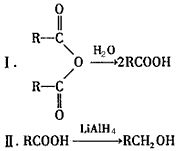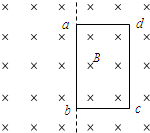问题
推断题
G是一种合成橡胶和树脂的重要原料;A是一种五元环状化合物,其核磁共振氢谱上只有一个峰;F的核磁共振氢谱上有3个峰,峰面积之比为2:2:3。已知(其中R是烃基)

有关物质的转化关系如下图所示,请回答以下问题。

(1)C中所含官能团的名称是________;④的反应类型是________ 反应。
(2)G的结构简式是____________________
(3)反应②的化学方程式为________________________
(4)若E在一定条件下发生缩聚反应生成高分子化合物,写出其中两种的结构简式:_________________
(5)反应⑥的化学方程式为____________________
(6)有机物Y与E互为同分异构体,且具有相同的官能团种 类和数目,写出所有符合条件的Y的结构简式:________________
答案
(l)羧基;消去
(2)CH2=CHCH=CH2
(3)HOOCCH=CHCOOH +H2 HOOCCH2CH2COOH
HOOCCH2CH2COOH
(4)
(5)HOOCCH2CH2COOH + 2CH3CH2OH CH3CH2OOCCH2CH2COOCH2CH3+2H2O
CH3CH2OOCCH2CH2COOCH2CH3+2H2O
(6)

 cosωt
cosωt


